One dollar silver certificates are collectible items. There aren't many different design types so it's easy enough to collect them all. The larger one dollar silver certificates are generally more valuable and they were produced from 1886 to 1923. The small one dollar certificates were produced from 1928 to 1957.
Most of these certificates have star note varieties. If your bill has a star either before or after the serial number then it's going to sell for a higher price.
Let's now take a look at the different series and what their current values are. Click on the links below to learn more information on a particular series.
Large Bills
If you have a large silver certificate bill in good condition then it's going to have value. There is a good collector's market for these bills and you can easily find a buyer on eBay or at a coin shop.
Martha Washington 1886, 1891 and 1896 Series

First lady Martha Washington appeared on three different silver certificate series. The above image is the 1886 series and the 1891 series has a similar look to it. The 1891 series was only a slight redesign. The backs of both of these notes have a lot of rich detail.
The 1886 $1 silver certificate is worth around $225 in very good condition. In uncirculated condition the price is around $2,850 for bills with an MS 63 grade.
The 1891 $1 silver certificate is worth around $245 in very good condition. In uncirculated condition the price is around $2,200 for bills with an MS 63 grade.
Martha Washington also appeared on the front and back of the 1896 series note. This note is known as the "educational bill" and it's more collectible. The 1896 series design is special because it was only a one-year design. It was also the last year that a woman appeared on US paper currency.
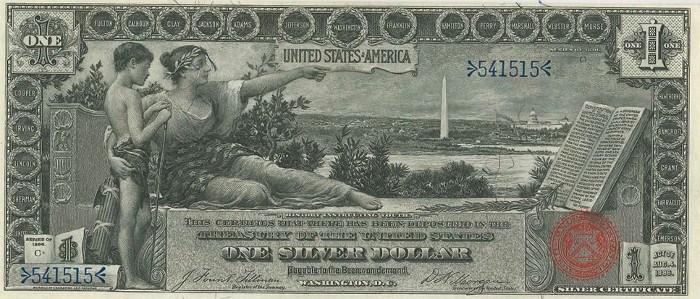
The 1896 $1 silver certificate is worth around $215 in very good condition. In uncirculated condition the price is around $2,950 for bills with an MS 63 grade.
1899 Black Eagle Series
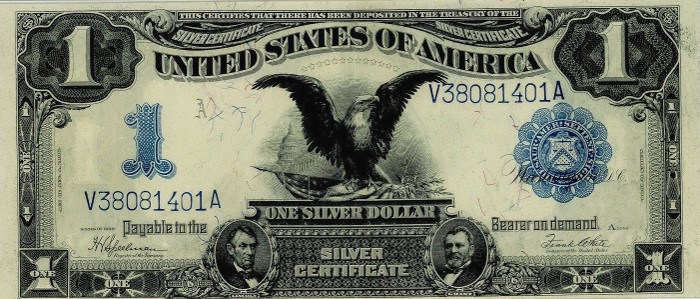
Another collectible note, the 1899 series is called the black eagle note. In the picture above you clearly see the black eagle in the center. Below the eagle you can see two small portraits of Abraham Lincoln and Ulysses S Grant.
The 1899 one dollar black eagle note is relatively common as a lot of them were printed. The government started printing them in 1899 and continued until 1923. But don't worry, there is still a good market for these notes. In very good condition they can sell for around $100. Uncirculated bills with a grade of MS 63 can sell for around $525-625.
1923 Series

The 1923 series is the most common of the large bills. 1923 was the last year that large bills were printed. They aren't very valuable because they are so common. Right now there are tens of thousands of 1923 one dollar silver certificates in existence.
Most of these bills are worth around around $37.50 in very good condition. Uncirculated bills with a grade of MS 63 can sell for around $195. The Woods and Tate signature combination is more valuable.
Small Bills
In 1928 the US government decided to change over to small bills. They did this to make transactions faster and to reduce the cost of paper and ink.
The small silver certificates are typically not as valuable as the large ones. These small bills are the same size as any US federal reserve note that is currently in circulation.
1928 Series
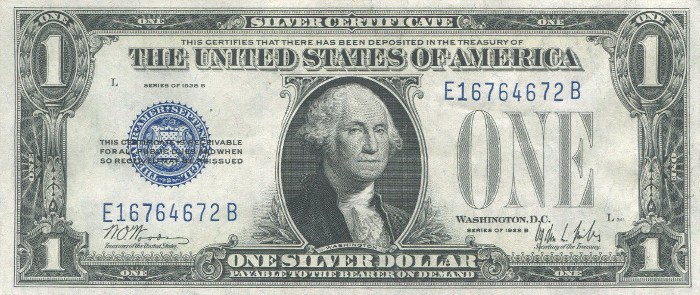
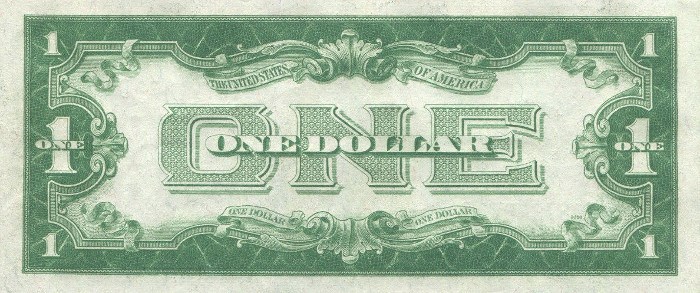
The 1928 series were the first small certificates to be produced, and a lot of them were printed- around 640 million. They were known as 'funnybacks' because of their unique back design.
Most of the 1928 one dollar silver certificates will sell for around $30 in very fine condition and around $80-90 in uncirculated condition with a grade of MS 63.
The series plays a large role in its value. There were six different series: 1928, 1928A, 1928B, 1928C, 1928D, and 1928E. The common series are the 1928, 1928A, and 1928B varieties. The rare series are the C, D, and E varieties. These rare varieties can sell for a lot of money.
1934 Series
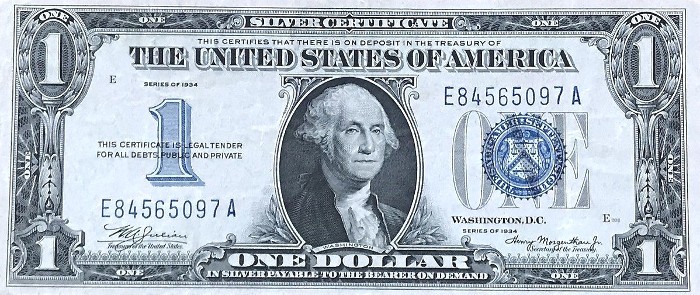
The 1934 series are also called funnybacks, because of their back design. Many 1934 one dollar silver certificates were printed and there are no variations.
This bill is unique because it's the only series to ever have a large blue number one on the left side of the bill.
The value for each bill is around $30 in very fine condition. In uncirculated condition the price is around $100 for bills with an MS 63 grade.
1935 Series
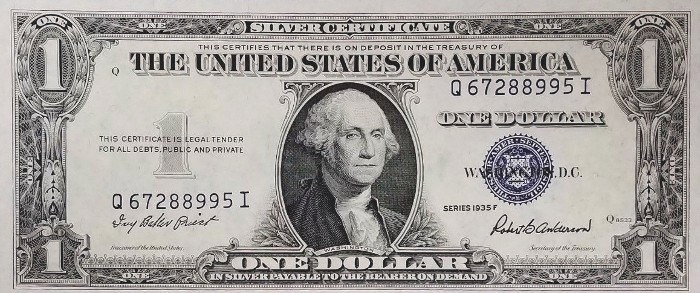
The 1935 series is common. Most of these 1935 one dollar silver certificates are only worth close to their face value in lightly circulated condition. In very fine condition these bills only sell for around $3.50. In uncirculated condition most bills only sell for around $12-17.50.
There were a few different varieties and the 1935A red R and red S experimental notes are worth the most money. The 1935A Hawaii and North Africa notes can also sell for high prices.
1957 Series

The 1957 series is very common and it's even possible to find these bills in circulation today. The 1957 one dollar silver certificates have the same look as the 1935 series.
In very good condition they only sell for around $3.75. In uncirculated condition they can sell for around $12-12.50. Because of the low price, it makes for a good novelty gift to a history buff or a coin and currency collector.
Grading System
Very good- A circulated note that has considerable wear to it. There might be one or two tears on the edge of the note. The note may be discolored, dark in appearance, or limp.
Very fine- A note that has been in circulation but not for a long time. The note is still relatively crisp. There may be some creases, folds, or light smudges.
MS 63 choice uncirculated- A note that shows no signs of ever having been in circulation. The note still has its original crispness. The note is also well-centered.
Conclusion
Old one dollar silver certificates are nice collectible items. It's important to remember that star notes will be worth more money. If you are lucky enough to have a valuable bill then it's best to place it in a currency holder. There are large-note currency holders and small-note currency holders available.
Sources:
A Guide Book of United States Paper Money
See also:
